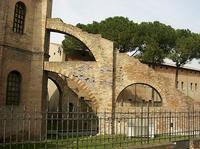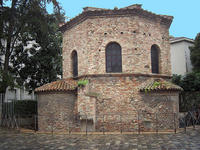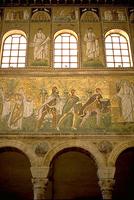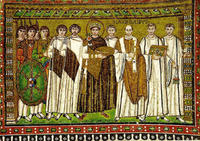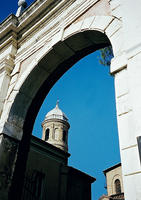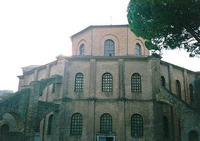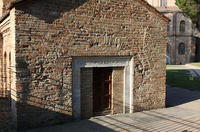You are in: Europe -> Italy -> Early Christian Monu... , and traditional search or Image Gallery will yield results of this site only
Early Christian Monuments of Ravenna
| Site number: | 788 |
|
| Type of site: | Cultural | |
| Date: | 5th century | |
| Date of Inscription: | 1996 | |
| Location: | Europe, Italy, Emilia-Romagna Region, City and Province of Ravenna | |
Up to 75 images are shown here. Click on each for more details or on Image Gallery for more images.
Six official UN languages:
Arabic,
Chinese,
English,
French,
Russian,
Spanish
Other languages: Bulgarian, Catalan, Czech, Danish, Dutch, Esperanto, Estonian, Finnish, Galician, German, Hebrew, Hungarian, Icelandic, Indonesian, Italian, Latin, Norwegian-bokmål, Polish, Portuguese, Romanian, Sicilian, Slovak, Swedish, Turkish, Ukrainian, Welsh, Low German
Other languages: Bulgarian, Catalan, Czech, Danish, Dutch, Esperanto, Estonian, Finnish, Galician, German, Hebrew, Hungarian, Icelandic, Indonesian, Italian, Latin, Norwegian-bokmål, Polish, Portuguese, Romanian, Sicilian, Slovak, Swedish, Turkish, Ukrainian, Welsh, Low German
| Description: | In the 5th century Ravenna was the seat of the Roman Empire and until the 8th century it was the heart of Byzantine Italy. Accordingly the site boasts a unique set of early Christian mosaics and monuments. The Mausoleum of Galla Placidia, the Arian Baptistery, the Neonian Baptistery, the Archiepiscopal Chapel, the Basilica of Sant'Apollinare Nuovo, the Mausoleum of Theodoric, the Church of San Vitale and the Basilica of Sant'Apollinare in Classe – were all erected in the 5th and 6th centuries. The group shows incredible artistic skill, consisting of an astonishing mélange of Graeco-Roman tradition, Christian iconography and oriental and Western styles. --WHMNet paraphrase from the description at WHC Site, where additional information is available. | |
| Ravenna is a city and comune in the Emilia-Romagna region of Italy. The city is inland, but is connected to the Adriatic Sea by a canal. Ravenna once served as the seat of the Western Roman Empire and later the Ostrogothic kingdom. It is presently the capital of the province of Ravenna. At 652.89 km² (252.08 sq mi), Ravenna is the second-largest comune in land area in Italy, although it is only a little more than half the size of the largest, Rome. --Wikipedia. Text is available under the Creative Commons Attribution-ShareAlike License. | ||
| Source: | http://whc.unesco.org/en/list/788 | |
| Reference: | 1. UNESCO World Heritage Center, Site Page. | |




